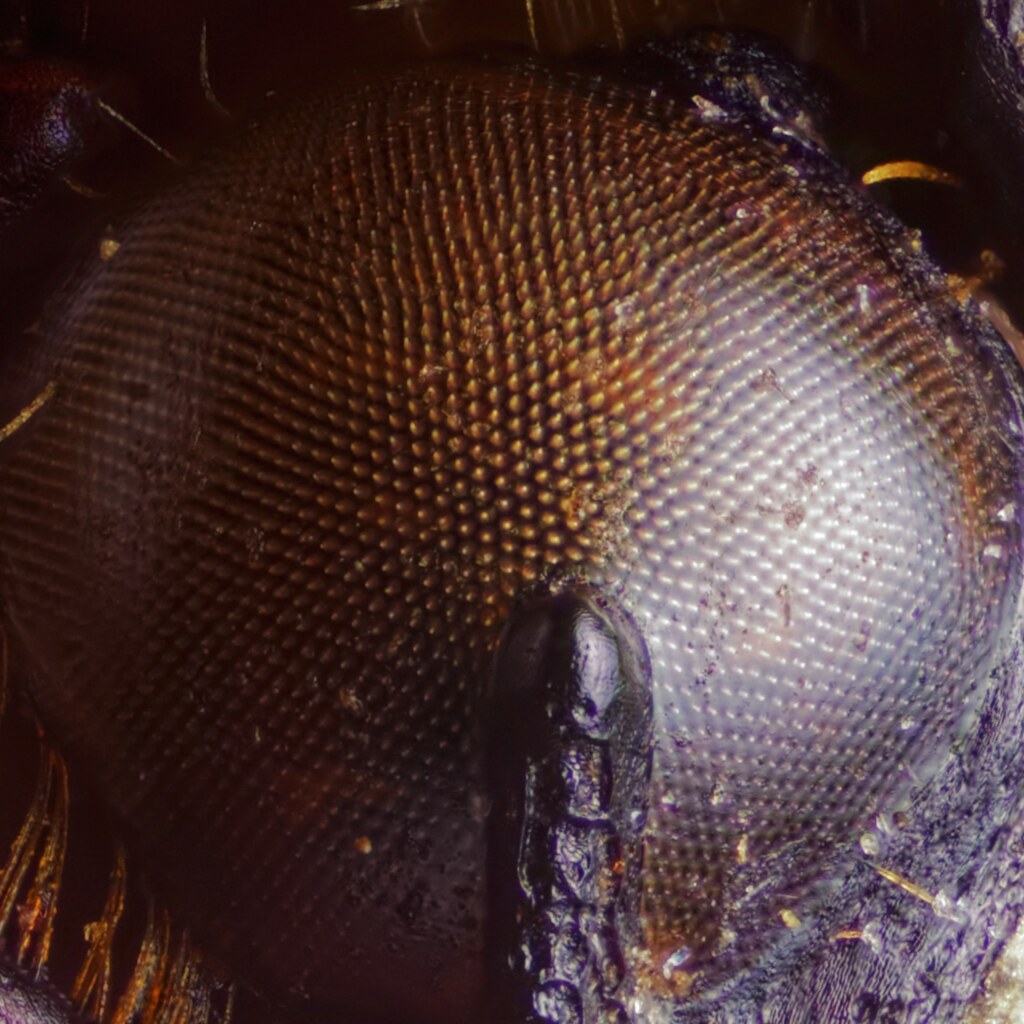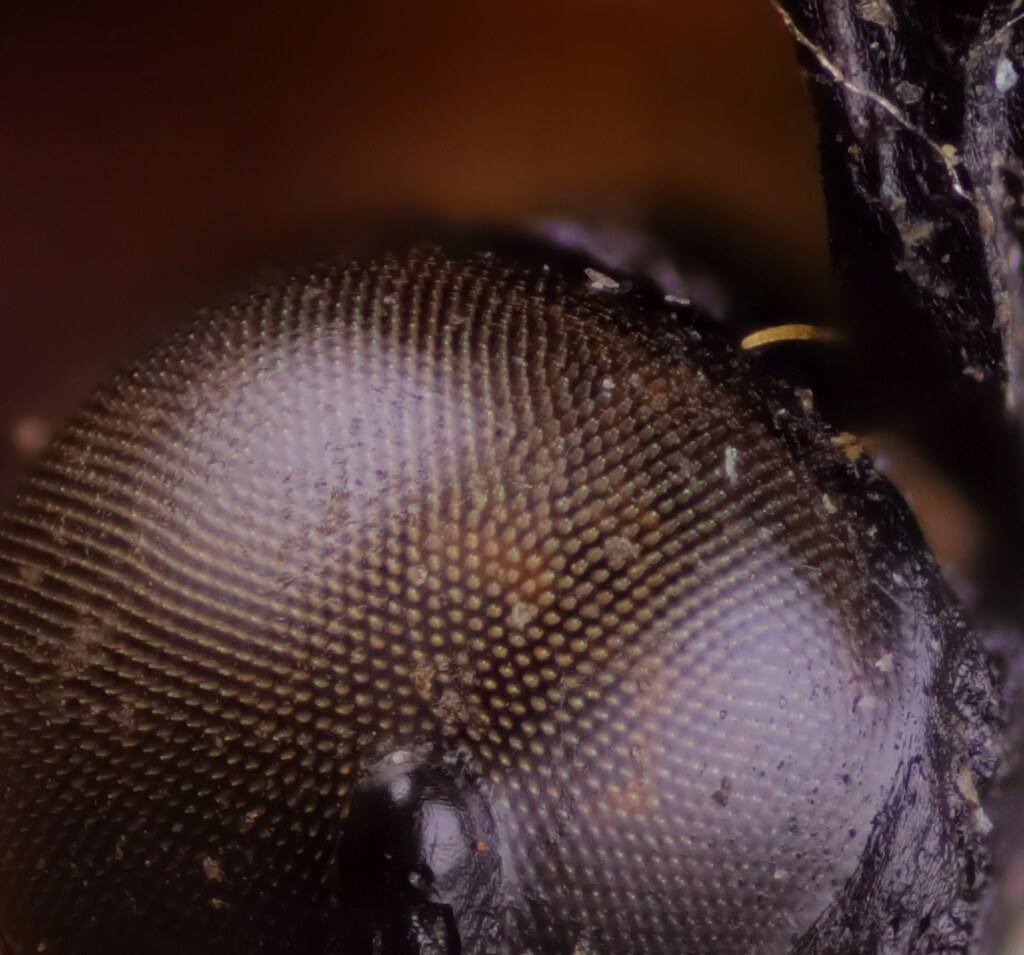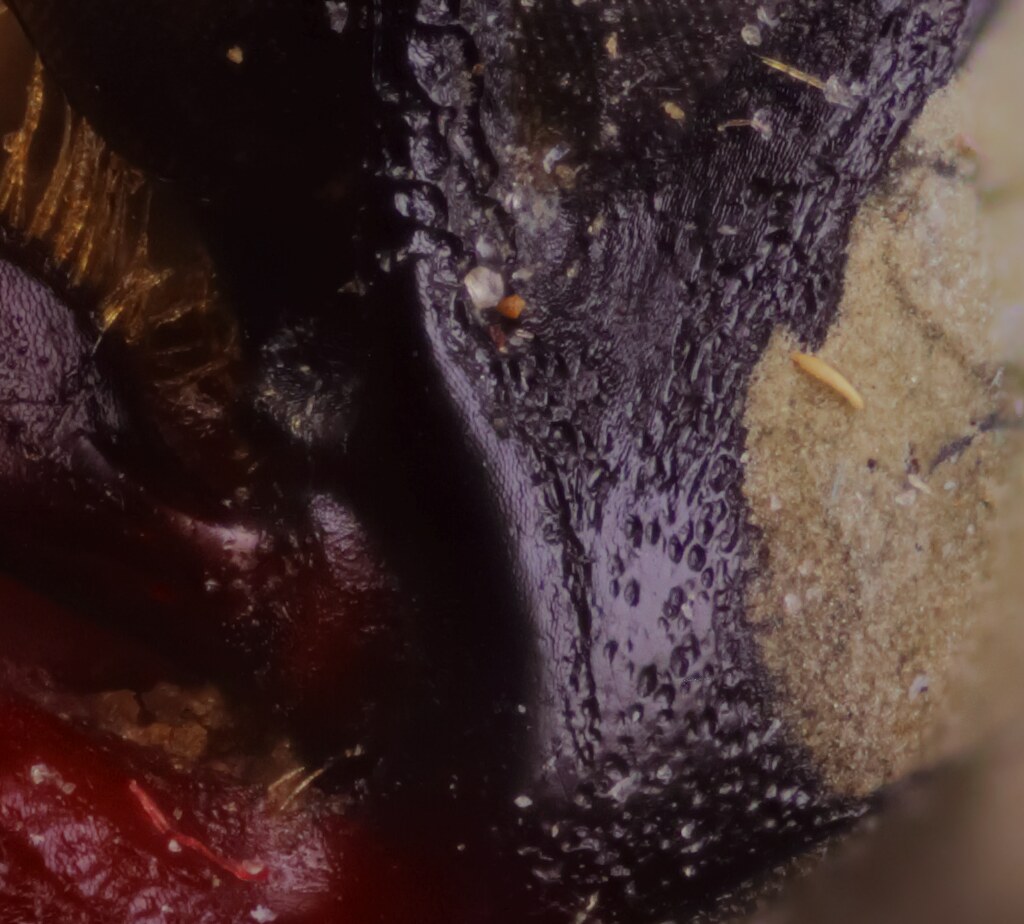
EFSC continuous light focus-stack, 5X through CFI60, Canon 6D body
Full-resolution image is HERE.
Not too long ago I switched from using a speedlight to an AlienBees studio strobe with a 16-inch beauty dish diffuser, as I needed the faster burst rate of the strobe in order to shoot stacks of live subjects as quickly as possible. After having used the studio strobe for some time and comparing those images with ones which I had taken with the speedlight I noticed that the strobe images were surprisingly soft. After some experimentation it became clear that the 1/1000-second burst from the strobe (as compared to ~1/10,000 second with the speedlight) was not effectively freezing camera vibrations.
The three full-resolution crops below illustrate the definition and image quality of the two lighting setups described above as well as a third image shot with the Canon 6D's Electronic First Shutter Curtain feature and continuous illumination, provided by two Ikea LEDs poorly diffused by a layer of toilet paper. All images are unsharpened.
Studio strobe image

Speedlight image

EFSC image
 [size=0]
[size=0][/size]

This EFSC image really took me by surprise. Not only is definition significantly improved over even the image shot under the fast burst of the speedlight, but the nature of the light and the subtlety of the structures beneath the membrane are strikingly different. In my opinion the image is really quite lovely in comparison with any other stack which I've done to date.
Since I had modified my setup considerably in order to reduce the vibrations of the rig I believe that, for the first time in my work, environmental vibrations dominated. While I have not determined the source of them they caused significant softening of the image under the continuous lighting in my initial shots taken with a 1/200-second exposure time. I increased the ISO and reduced the shutter time to 1/1000 second, and the softness which persisted seems to confirm that this exposure duration, which approximately matches that of the studio strobe burst, does indeed fail to freeze vibration.
Only when I increased the ISO up to 1600 in order to allow exposures of 1/2500 second did the image begin to approach pixel-level definition, something which I've not previously obtained.
While my live subjects do not allow me to use continuous lighting and therefore limit me to flash illumination, which is currently incompatible with the EFSC technique, it became clear to me what a wonderful method this is when shooting stacks of dried specimens. Thank you Charles Krebs!
